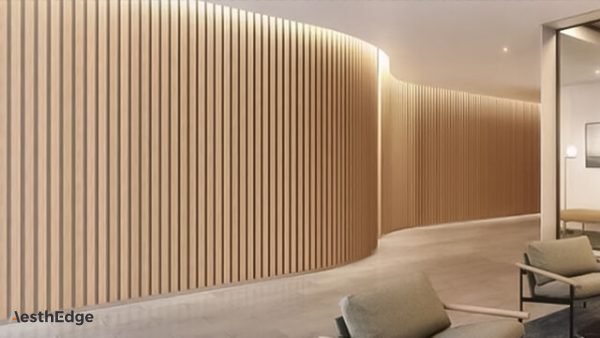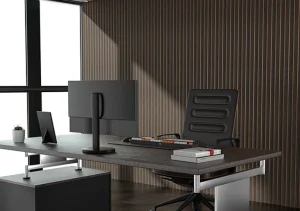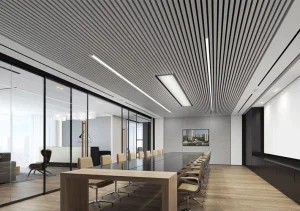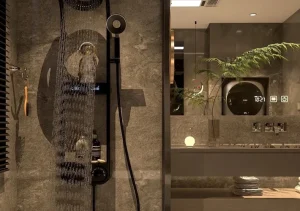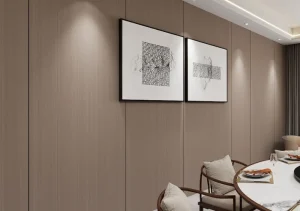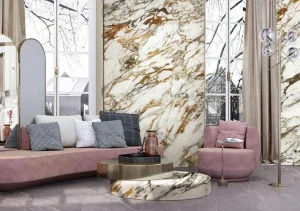In the world of hotel construction and renovation, the term FF&E is more than just a buzzword—it is a critical component of a hotel’s identity, functionality, and guest experience. FF&E, short for Furniture, Fixtures, and Equipment, represents all the movable items within a hotel that are not permanently affixed to the building. This includes everything from beds, sofas, and curtains to lamps, artwork, and kitchen equipment.
Proper planning and procurement of FF&E is essential to the success of any hotel project. Whether it’s a new build, renovation, or rebranding, the selection and management of FF&E affect not only the guest’s comfort and aesthetic impression but also the overall operational efficiency and financial performance of the property.
In this article, we will explore the detailed meaning of hotel FF&E, its categories, significance in project planning, procurement strategies, budgeting considerations, and key success factors for developers, designers, and investors.
Table of Contents
ToggleWhat Is Hotel FF&E?
1.1 Definition of FF&E
FF&E refers to Furniture, Fixtures, and Equipment, which are essential elements used in furnishing hotel interiors but are not part of the building’s structural shell. These items are typically:
- Moveable or semi-permanent
- Depreciable assets
- Critical for functionality and aesthetic appeal
Examples include:
| Category | Items Included |
|---|---|
| Furniture | Beds, sofas, tables, chairs, wardrobes |
| Fixtures | Light fittings, mirrors, vanity units |
| Equipment | Televisions, minibars, hairdryers, safes |
1.2 FF&E vs OS&E
While often confused, FF&E is different from OS&E (Operating Supplies & Equipment). OS&E includes smaller operational items like linens, cutlery, dishes, cleaning tools, and guest room supplies. FF&E, on the other hand, consists of larger, longer-term assets that form the core of a room’s setup.
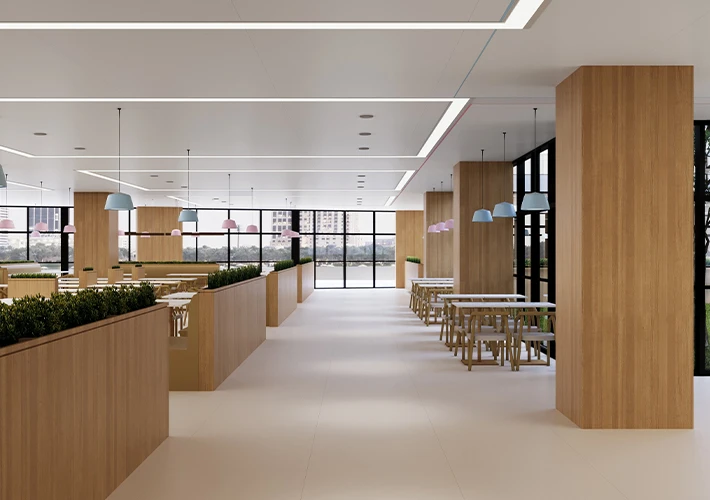
Importance of FF&E in Hotel Project Planning
2.1 Defines Guest Experience and Brand Identity
The look and feel of a hotel room—whether minimalist modern, luxury classical, or rustic resort—comes down to FF&E. It defines:
- The brand tone and visual identity
- The comfort level and user experience
- The quality perception by guests
Poor or outdated FF&E can instantly diminish guest satisfaction regardless of location or service quality.
2.2 Operational Functionality
FF&E plays a significant role in ensuring rooms and facilities function smoothly. For example:
- Ergonomic desk and chair support business travelers
- Smart TVs or in-room tablets improve digital engagement
- Storage solutions impact housekeeper efficiency
2.3 Investment and Budget Impact
FF&E accounts for 8% to 15% of a hotel’s total development cost. Proper planning helps:
- Avoid overspending
- Meet project timelines
- Improve asset value and ROI
FF&E Categories in Hotel Projects
FF&E packages are often customized for different functional zones of a hotel:
3.1 Guest Rooms
- Beds, headboards, side tables
- Lounge chairs, ottomans, desks
- Lighting fixtures, curtains, wardrobes
- Televisions, minibars, safes
3.2 Public Areas
- Lobby seating, reception counters
- Lounge and bar furniture
- Restaurant dining sets
- Lighting, artwork, indoor plants
3.3 Meeting and Event Spaces
- Modular tables and chairs
- AV equipment and podiums
- Decorative acoustic panels
3.4 Outdoor Areas
- Patio seating, sun loungers
- Poolside umbrellas and cabanas
- Outdoor dining furniture
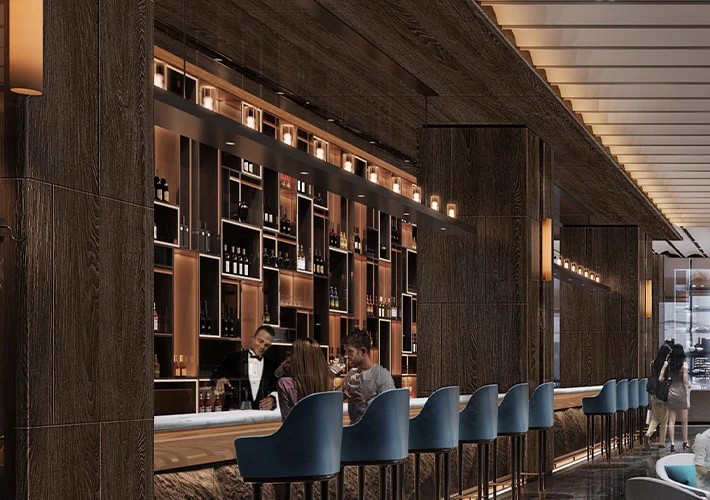
FF&E Procurement Process
Effective FF&E procurement is a multi-stage process that involves collaboration between designers, procurement agents, contractors, and suppliers.
4.1 FF&E Planning in Design Stage
- Establish style guidelines and mood boards
- Create FF&E specification lists
- Coordinate FF&E needs with architecture and MEP plans
4.2 Budgeting and Cost Estimation
- Prepare room-by-room FF&E budgets
- Use standard metrics like “cost per key”
- Factor in shipping, taxes, warehousing, and installation
4.3 Vendor Selection
- Local vs international suppliers
- Evaluate by quality, lead time, past project experience
- Visit factories and check sample quality
4.4 Production and Logistics
- Confirm lead times and production capacity
- Use 3rd-party inspections to ensure quality
- Arrange consolidated international shipping
4.5 Installation and Handover
- Use on-site FF&E coordinators
- Follow floor-by-floor installation schedules
- Document punch lists and resolve issues
Key Considerations in FF&E Project Planning
5.1 Timing Is Everything
FF&E delays can derail the entire project. Ensure:
- Procurement starts early—ideally 9–12 months before opening
- Vendors commit to delivery timelines
- Coordination with construction milestones
5.2 Quality and Durability
Hotel FF&E must withstand years of guest usage. Key quality indicators:
- Commercial-grade fabrics and foams
- Fire-retardant certifications
- Stain and wear resistance
5.3 Compliance and Local Standards
Depending on the project location, FF&E may require:
- Fire safety certification (UL, BS, ASTM, etc.)
- Sustainability standards (FSC wood, LEED points)
- Local customs regulations for imports
5.4 Flexibility for Future Upgrades
Good FF&E planning includes:
- Modular or reconfigurable furniture
- Standardized dimensions for easy replacements
- Vendor agreements for post-opening support
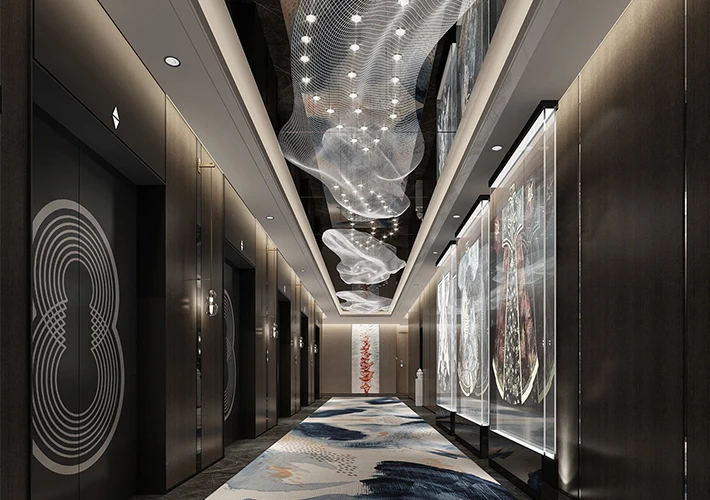
FF&E Budgeting Guidelines
Here’s a general estimate of how FF&E budgets break down:
| Area | % of Total FF&E Budget |
|---|---|
| Guest Rooms | 60%–70% |
| Public Areas | 15%–20% |
| Restaurants & Bars | 5%–10% |
| Meeting Facilities | 3%–5% |
| Back of House | 3%–5% |
Cost per key benchmarks (varies by hotel type):
- Economy Hotel: $3,000 – $5,000 per room
- Midscale Hotel: $6,000 – $10,000 per room
- Luxury Hotel: $15,000 – $25,000+ per room
Benefits of Professional FF&E Planning
7.1 Consistent Quality and Design
Using FF&E procurement specialists ensures:
- Design consistency across all guest rooms
- Quality alignment with hotel standards
- Better supplier coordination
7.2 Cost Efficiency
- Competitive bidding lowers unit prices
- Volume discounts from preferred vendors
- Reduced costly mistakes or change orders
7.3 Time and Resource Savings
- Streamlined communication between teams
- Proper logistics scheduling prevents delays
- Detailed documentation minimizes rework
FF&E Trends in Modern Hotel Projects
As guest expectations evolve, FF&E choices also reflect new priorities:
8.1 Smart and Tech-Integrated Furniture
- USB charging headboards
- Voice-activated room controls
- Integrated lighting systems
8.2 Sustainable and Eco-Friendly Materials
- Recycled wood and plastic composites
- VOC-free finishes and adhesives
- Fabrics from renewable sources
8.3 Localized Design Themes
- Culturally inspired furniture styles
- Locally sourced materials
- Artisan-made decorations
8.4 Modular and Multi-Use Furniture
- Sofa beds for family flexibility
- Foldable desks for hybrid work
- Mobile minibar units
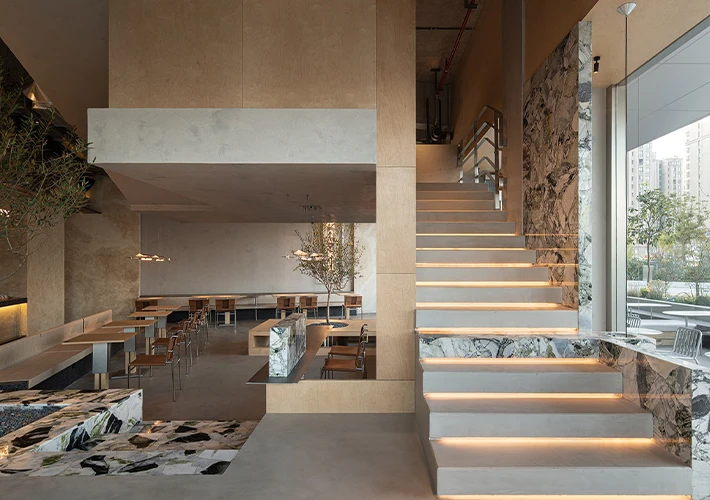
Conclusion
FF&E is not just about choosing furniture—it’s about shaping the guest experience, aligning with the brand identity, and achieving investment efficiency. For hotel developers, interior designers, and project managers, understanding the full scope of FF&E is critical for smooth project execution and long-term success.
By involving FF&E planning early, working with experienced vendors, and keeping a close eye on budgeting and logistics, you ensure that your hotel project doesn’t just open on time—it opens with style, comfort, and distinction.
Need help sourcing quality hotel FF&E packages from China?
We offer one-stop procurement and customization for beds, sofas, lighting, wardrobes, and more—with full compliance, competitive pricing, and global shipping. Contact us now to discuss your project.

